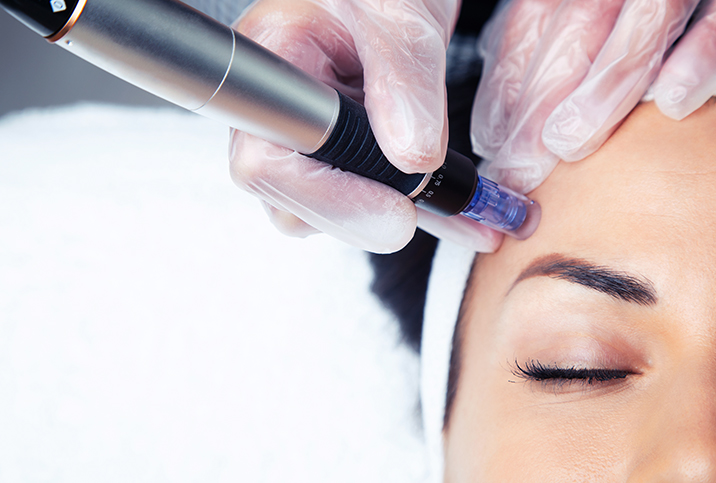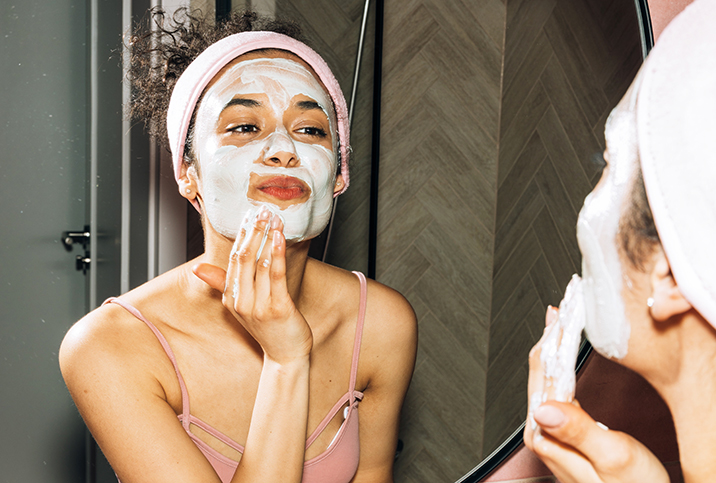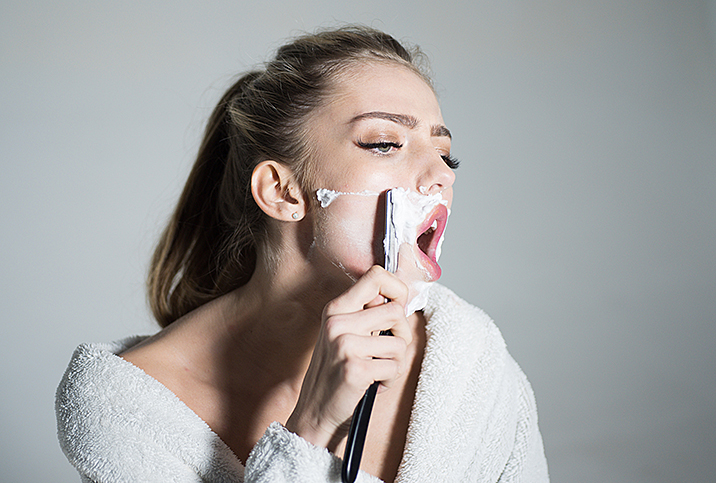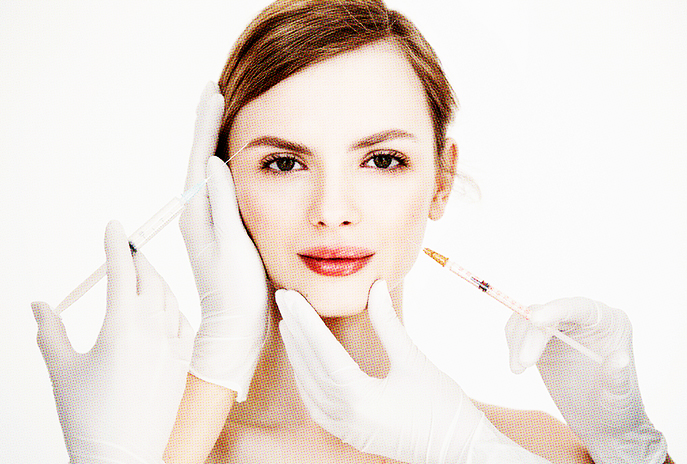Is Microneedling for You? The Pros and Cons of Skin Rejuvenation

Microneedling is a cosmetic procedure in which tiny needles are rolled over the skin using a tool called a derma roller, which resembles a mini-paint-roller. This causes micro-injuries, stimulating collagen and elastin production—hormones whose levels decline as we age—and promoting healing. The result is tighter, younger, more even-looking skin with increased skin density, and the appearance of wrinkles is reduced.
The procedure is commonly used to treat acne scars, large pores, sunspots and hyperpigmentation, reduced skin elasticity, fine lines and wrinkles, and uneven tone. It is most often used on the face, although it can treat stretch marks and other skin imperfections elsewhere on the body, including the neck, arms, stomach and back of the hands. It can also be combined with an LED lamp treatment to enhance results.
The pros
1. Microneedling is considered minimally invasive and requires next to no downtime for most people. It also works on all skin types.
2. Treatment typically takes only 30 minutes, although that time increases to two hours when preparation time is included.
3. It is effective for mild acne scars and mild skin discoloration or aging, and is more affordable than laser treatments. It's also much less invasive and expensive than anti-aging cosmetic surgeries.
4. Studies indicate that it allows your at-home skincare products—such as hyaluronic acid, vitamins, peptides and anti-aging solutions—to penetrate your skin more deeply, and thus have a greater effect. Many people describe their skin as bright, glowing, even-colored and firm after treatment.
5. Microneedling performed by a professional is considered significantly more effective than at-home rollers or peels.
The cons
1. Results can take a few weeks to be revealed.
2. Skin may look extremely flushed, red, itchy and irritated for several days after each treatment. During this time, wearing makeup to cover any redness is not recommended, as your skin can be fragile and products can get into pores and cause breakouts and infections. Avoiding direct sunlight is also important until the skin has fully healed. Potential but rare side effects of the procedure include bleeding, bruising, infection, peeling and even scarring.
3. Microneedling is more expensive than basic skincare treatments, costing anywhere from $100 to $700 per session depending on the size of the area treated, and this procedure is not typically covered by insurance. Multiple treatments are usually required—three separate sessions spaced two to four weeks apart are most common—and further treatments may be needed in the future for maintenance.
4. Microneedling is not recommended for pregnant women, and people on blood thinners or certain acne medications, such as retinoids, should speak to their doctor about whether the procedure is safe for them. In addition, individuals with eczema, psoriasis, open wounds, or a history of skin scarring, poor wound healing or radiotherapy may not get their doctor's approval for microneedling.
Preparation and aftercare
Avoid using retinoids or harsh products on your skin for several days, if not longer, before the procedure. If you decide to use an at-home treatment, be aware that home rollers won't produce the same results nor will the results last as long.
Most important of all, do not go to a salon or someone who is not a qualified dermatologist. Microneedling should be carried out only by a dermatologist certified by the American Board of Dermatology.
A consultation beforehand can be helpful, as it will give you the opportunity to scope out the facility and the practitioner to make sure you're comfortable with both, and ask any questions you may have. For example, while most people describe the process as somewhat uncomfortable but not painful, if that's a concern for you, ask if topical numbing creams can be used as part of the procedure.
Be prepared to take special care of your skin after the procedure: Treat it carefully, wash with a gentle cleanser and moisturize with scent-free products for sensitive skin. You should also have sunscreen on hand for several weeks afterward in case you find yourself in direct sunlight. If an antibiotic topical cream is prescribed, be sure to use it.
You should avoid touching your face—only doing so with clean hands which you should wash frequently with antibacterial soap—as well as saunas, swimming pools, intense and sweaty workouts, and extreme sun exposure for at least 72 hours after the procedure.
In the meantime, and most importantly, enjoy your new and youthful look.


















